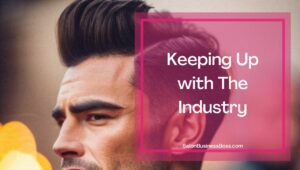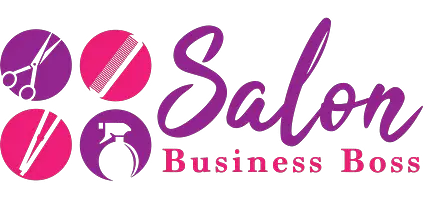Being a hairdresser is an awesome profession. You get to help people feel beautiful, you meet a lot of new and interesting individuals, and you get to let your creative side out every once in a while with willing clients. However, just like with every profession, being a hairdresser comes with some downsides.
The two most obvious cons of being a hairdresser are the low pay and the physical toll the profession takes on you. Along with these downsides, being a hairdresser can also be emotionally taxing, requires previous training before starting, and requires keeping up with training and trends. Some other downsides are long hours, not having time off, and people asking for freebies.
Health Demands
Being a hairdresser can be taxing on your health in more ways than one.
Physical Demands

As a hairdresser, you spend most of your time at work on your feet. This is because you need to be able to work on your clients’ hair and that is much harder to do if you are sitting down. However, your feet aren’t the only body parts that are made to suffer:
Your hands can end up aching because of the work you put into shampooing your clients’ hair or putting other products in. While the aching does lessen with time, some older stylists still feel it.
Your arms can end up hurting, especially if a client is requiring a hairstyle that requires you to hold up sections of hair for long periods. Think of getting highlights or the like.
Your neck can end up hurting, especially if someone is too tall or too short and the salon chair isn’t able to move accordingly to accommodate.
Your back can end up hurting for the same reason as your neck. These problems are also more likely with young children, who might put up a struggle when you’re trying to do their hair.
The nature of the work of a stylist requires a decent amount of physical strength, especially if you plan to be styling hair for a long period.
Checklist for Opening a Hair Salon (What to know before you open)
Emotional Demands
Another downside of working as a hairdresser is the emotional toll that the work can take on you. This downside differs from person to person and my personality, but there are still a handful of situations that arise which will drain most people.
Customer complaints. Some customers get angry when their hair does not come out the way they planned, even if you did exactly what they ask for. Depending on where your salon is located and the kind of clientele you serve, you might get cussed out on a fairly regular basis.
Career choice doubts. A lot of clients at hair salons just don’t seem to believe that someone might want to be a hairstylist from the get-go. They’ll ask why you didn’t go to college and might even critique your career choice. Even some of the nicer clients who try not to be so direct can make you feel like a failure with their questions.
Need to socialize. If you are a social butterfly, then this might not be an issue for you. However, introverts can find this part somewhat challenging. To avoid a long time of awkward silence, you might feel forced to try to strike up a conversation with your client. When they don’t reciprocate, it can feel burdensome. However, getting a chatty Cathy in your salon chair can be equally tiring.
Due to the job’s nature of being similar to customer service, hairdressers can expect at least some days that feel emotionally draining
Long Hours
Some salons expect their hairdressers to work long hours. This is especially true for newer hairdressers that need the training. Another reason why this happens is that a lot of hairdressers own their salons. When you are a business owner, you tend to spend more time at work trying to keep everything in balance.
Monetary Downsides
While being a hairdresser can have some serious effects on your health, the job also comes with some monetary drawbacks that stop some people from pursuing the career.
Requires Training
Before you can start making money as a hairdresser, you first need to spend money to become one. To become a hairdresser, you need to get a cosmetology license, the requirements for this license vary from state to state, but you can expect to attend a beauty school for up to two years, during which you’ll probably have to complete a certain number of hours in training.
After attending beauty school, you’ll need to take the state-wide exam to show that you’re an adept cosmetologist. This is mostly because you’ll be working with materials that could potentially affect a client’s health. Both the beauty school and the exam require money to take, By the time you’re ready to start doing hair, expect to have paid up to $20,000 if you went to a high-end school.
Low Pay
The good news for beauty schools is that they do offer scholarships to high-performing students. Still, if you happened to pay all of that money to go to school, you might be slightly disappointed with what you make after graduating.
The average hairdresser in 2019 made around 28,500 dollars. This is including hairdressers that work in expensive cities as well as hairdressers that have been working for a while. The bottom 20% of hairdressers made just over $20,500 while the top 20% made just over $40,000. For a brand new hairdresser, working for a full year might give you just enough money to pay off your beauty school.
Wondering how much you will make as an owner? Check out our article HERE.
Other Hairdresser Downsides
Keeping Up with The Industry

Being a hairdresser is kind of like being right in the middle of the fashion craze. You have to know what kind of hairstyles are in fashion and the know-how to execute those hairstyles for your clients. A good example is the ombre. This hairstyle that requires a hair color change along a gradient was really popular for a few years. It’s a tricky hairstyle and can look bad if not done correctly. Being able to execute such a hairstyle is a must for a hairdresser.
You also need to be caught up on the latest trends for clients who come in and know they want a change but aren’t one hundred percent sure what they want. Giving them a hairstyle that’s on-trend is sure to get compliments from friends and family, therefore also likely increasing the probability they’ll come back to you.
Freebies
Certain careers are always accompanied by this problem. Now that you’ve learned to do something that the average person can’t do, they want you to help them out. For free. Sometimes it’s just your sister asking for a haircut. Other times one of your friends wants you to help them do their highlights. In both cases, they neglect to realize that this is your job.
If you don’t mind giving out freebies, then this isn’t a downside for you. However, it can get annoying when people are constantly asking you to dedicate time away from work to do your job without getting paid.
Lack of Time Off
This downside for hairdressers differs by salon as well as your role in the salon. If you are a hairdresser as well as a salon owner, then you probably will constantly be working during your days off to do small things like scheduling appointments or checking in on your salon. The less responsibility you have in your workplace, the less likely you’ll find yourself having to come to work on your days off.
However, some salons don’t even give days off to their employees. This is especially true for smaller salons. The hairdresser industry is so competitive that for hairstylists that don’t belong to a major chain, there is no time to give days off to hairdressers. Smaller salons also similarly suffer from being unable to offer benefits to their hairdressers.
Even though being a hairdresser does have a fair number of downsides, it’s still a fun job that can give you a sense of fulfillment and lets you meet a lot of new people. Just carefully measure the drawbacks against the benefits before you embark on the journey of becoming a hairstylist.
Clever Salon Business Name Ideas and How To Create One
Related Questions

What are some benefits of being a hairdresser?
One big benefit of being a hairdresser is that there’s typically less schooling involved than a lot of other jobs requiring bachelor’s degrees that result in a similar salary. Becoming a hairdresser is also a great idea for extroverts that like having the opportunity to talk with a lot of different people throughout the day. You can also develop relationships with some regular customers since they are captive in a chair for roughly thirty minutes.
Being a hairdresser also allows you to express your creative side, especially if you have a customer that is open to receiving any kind of hairstyle. Very few other jobs allow you as much creative freedom.
How long does it take to become a hairdresser?
If you dedicate yourself fully to becoming a hairdresser, it will take you roughly nine months to finish beauty school, after which you just need to pass the cosmetology test to start taking clients. If you can only attend beauty school part-time or just need to move at a slower pace, you can expect to be done with your hairdresser education in two years. Becoming a hairdresser depends completely on you and your timeframe.
Looking to start your own Salon? Get the documents you need to get organized and funded here.
Please note: This blog post is for educational purposes only and does not constitute legal advice. Please consult a legal expert to address your specific needs.

About the author. Entrepreneur and Salon Business Fan.
Hi! I am Shawn and I am a happy individual who happens to be an entrepreneur. I have owned several types of businesses in my life from a coffee shop to an import and export business to an online review business plus a few more and now I create online salon business resources for those interested in starting new ventures. It’s demanding work but I love it. I do it for those passionate about their business and their goals. That’s why when I meet a salon business owner, I see myself. I know how hard the struggle is to retain clients, find good employees and keep the business growing all while trying to stay competitive.
That’s why I created Salon Business Boss: I want to help salon business owners like you build a thriving business that brings you endless joy and supports your ideal lifestyle.

